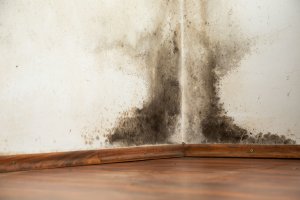Fitness for Human Habitation Act 2018

Contact
Table of Contents
Understanding the Fitness for Human Habitation Act 2018: Your Rights as a Tenant
“Home is a safe haven and a comfort zone. A place to live with our families and pets and enjoy with friends. A place to build memories as well as a way to build future wealth. A place where we can truly just be ourselves. And whether our houses are big, small, fancy or modest, they are our shelters and our sanctuaries.” (An answer provided to Habitat for Humanity: ‘what is a home?‘ )
On 20 December 2018 the Homes (Fitness for Human Habitation) Act 2018 received Royal Assent. The Act comes into force on 20 March 2019.
Why Was the Fitness for Human Habitation Act 2018 Introduced?
Shelter reported in 2017 that there are around 1 million rental homes in England with hazards that pose a serious risk to the health, which is estimated to affect 2.5 million people.
The existing law that we know so well often doesn’t offer a means for tenants to compel their landlords to ‘fix’ unsafe accommodation so that it is safe for their occupation. Problems include fire safety issues, inadequate heating (a common complaint for our clients), poor ventilation causing condensation and mould growth (perhaps the most common complaint). Poor living conditions measurably affect health and quality of life.
Attempts have been made to pass legislation before but were voted down by MPs with vested interests. In June 2017 the Grenfell Tower disaster demonstrated just how significant a risk unsafe properties pose. The need for legal reform gained popular cross-party support and momentum following Grenfell. A private member’s bill was tabled by Karen Buck MP in July 2017. It has now had 3 reading in the House of Commons and 3 in the House of Lords.
The basic principle being: homes to be fit for human habitation at the start of the tenancy and to remain so throughout.
s.8 of the LTA 1985 already has a fitness provision but this has only applied to very low rent tenancies, and so its practical application is extremely limited.
Who Does the Fitness for Human Habitation Act 2018 Apply To?
It will apply to all new tenancies of a term of less than 7 years (including new periodic tenancies) granted on or after the commencement date. This will include ‘replacement’ tenancies.
It will also apply to all existing fixed term tenancies that began before the commencement date, but become a periodic tenancy after the commencement date. So it will apply to secure tenancies that arise after an introductory tenancy, assured tenancies that arise after a starter tenancy, as well as the most common statutory periodic tenancies that arise after an assured short hold fixed term.
It will not immediately apply to existing periodic tenancies (statutory, secure, assured and protected tenancies) at the commencement date, but will apply to all such periodic tenancies 12 months after 20th March 2020.
What Does the Fitness for Human Habitation Act 2018 Do?
The Act amends the Landlord and Tenant Act (LTA) 1985, particularly sections 8-10, by introducing new sections 9A-9C. Under the Fitness for Human Habitation Act 2018, landlords are required to ensure that their properties are:
- Fit for human habitation at the start of the tenancy.
- Kept in a habitable state throughout the tenancy.
This means landlords are now legally obligated to maintain their properties at a basic standard of safety and habitability for tenants. Importantly, this cannot be contracted out of by landlords, and tenants cannot be penalised for enforcing their rights under the Act.
It covers the dwelling-house, and all parts of the building in which the landlord has an estate or interest (e.g. common parts in a block of flats, retained parts such as the roof/walls/windows).
What Are the Exceptions Under the Act?
Yes. The obligation has exceptions which are found at ss.9A (2)-(3). So a landlord will not be responsible where:
- The tenant’s failure to behave in a tenant-like manner has caused the unfitness
- The unfitness results from a breach of a tenant covenant.
- The landlord does not have to reinstate or rebuild after destruction or damage by fire, storm, flood or other inevitable accident.
- The landlord is not obligated to maintain or repair anything the tenant is entitled to remove from the dwelling.
- The landlord is not obligated to carry out works or repairs which, if carried out, would put the landlord in breach of any obligation imposed by any enactment (whenever passed or made). Examples include breaching building regulations, planning permissions etc.
A landlord will also not be in breach in a situation where the required works need third party consent and that consent has not been given despite reasonable endeavours to get it (for example, the consent of a head landlord or neighbour).
What Makes a Property Unfit for Human Habitation?
The amended s.10 of the LTA 1985 provides a list of matters in a dwelling or house. The condition of the dwelling or house shall be considered in respect of the following:
- repair,
- stability,
- freedom from damp,
- internal arrangement,
- natural lighting,
- ventilation,
- water supply,
- drainage and sanitary conveniences,
- facilities for preparation and cooking of food and for the disposal of waste water;
- in relation to a dwelling in England, any prescribed hazard;
“and the house or dwelling shall be regarded as unfit for human habitation if, and only if, it is so far defective in one or more of those matters that it is not reasonably suitable for occupation in that condition.”
When considering ‘prescribed hazards’ under the Act we are looking at familiar territory and the existing regulations as prescribed by the Secretary of State. In particular, the hazards listed in the Housing Health and Safety Rating System (HHSRS) and the definition of “hazard” at s.2(1) of the Housing Act 2004.[1] This will include Category 1 and Category 2 hazards.
What evidence will we need to prove unfitness & liability?
It isn’t necessarily a requirement to have an HHSRS inspection and report (but if there is one, all the better) to be able to establish a property is unfit for habitation. The key issue for the court’s decision is whether the dwelling is ‘not reasonably suitable for occupation in that condition’. To reach a decision the Court will have to have regard to the s.10 matters above, which includes hazards but is not solely limited to them. A HHSRS inspection could be one way of persuading the Court that the property is unfit.
Other evidence may include, as with housing disrepair claims, an expert report from a surveyor or independent EHO. This could be helpful to the question of liability but also help establish what works are required as part of any remedy.
The Act implies a covenant to allow the landlord access at reasonable hours of the day on the giving of 24 hours written notice. As with disrepair claims, refusal of access by a tenant to undertake works could be raised as part of a defence to an unfitness claim.
As with disrepair claims, common law notice requirements will apply to unfitness claims. A landlord will need to have notice of the unfitness and liability will not ‘start’ until he has had notice (from the tenant or a third party). A landlord will have a reasonable period of time to rectify the unfitness.
A landlord is deemed to be on notice for unfitness arising from any retained/common parts (in which the dwelling is a part) as soon as the unfitness arises.
Legal Action and Tenant Rights
It is expected that the procedure will broadly mirror a disrepair claim in that:
- Claims should follow the pre-action protocol. The existing disrepair protocol may well be amended to include unfitness claims. Until then, it would be a good idea to follow the protocol. I’ve prepared a table showing the actions/dates in summary form to help with this.
- Proceedings will be issued in the County Court in much the same way as a disrepair claim.
- Remedies? The same as a disrepair claim: orders for works and damages for “loss of amenity” so the same sort of quantum exercise should be undertaken as with general damages in disrepair.
These types of claims may well have a personal injury element and therefore it always important to
- be aware of any injuries and to take instructions;
and
(b) be aware of the key limitation dates. If the PI element requires expert evidence the personal injury protocol should be followed. 3.5 of the disrepair protocol confirms:
3.5 Housing disrepair claims may contain a personal injury element. If the personal injury claim requires expert evidence other than a General Practitioner’s letter, the Personal Injury Protocol should be followed for that element of the disrepair claim. If the personal injury claim is of a minor nature and will only be evidenced by a General Practitioner’s letter, it is not necessary to follow the Personal Injury Protocol. If the disrepair claim is urgent, it would be reasonable to pursue separate disrepair and personal injury claims, which could then be case managed together or consolidated at a later date.
The limitation for PersonaI Injury (PI) is 3 years from the date of injury. For contractual claims (in disrepair or unfitness) the limitation is 6 years from the date of the contractual breach. A claim that includes a PI element will limit the whole claim to 3 years, so it is important to assess potential damages in either scenario to advise your client.
Funding legal action
Legal aid will be available if falling within Schedule 1 of LASPO 2012 which does not specifically state ‘disrepair’.
- Risk to health or safety in rented home
35(1)Civil legal services provided to an individual in relation to the removal or reduction of a serious risk of harm to the health or safety of the individual or a relevant member of the individual’s family where—
(a)the risk arises from a deficiency in the individual’s home,
(b)the individual’s home is rented or leased from another person, and
(c)the services are provided with a view to securing that the other person makes arrangements to remove or reduce the risk.
Legal aid will not be available for compensation claims so, if the case is about compensation only, or there is a compensation element (as usually there is) it would be beneficial to have another funding regime in place, for example a conditional fee agreement (CFA).
[1] “hazard” means any risk of harm to the health or safety of an actual occupier of a dwelling or HMO which arises from a deficiency in the dwelling or HMO or in any building or land in the vicinity (whether the deficiency arises as a result of the construction of any building, an absence of maintenance or repair, or otherwise).”
Speak to us about the Fitness for Human Habitation Act
The Fitness for Human Habitation Act 2018 is a vital piece of legislation that empowers tenants to hold landlords accountable for providing safe and habitable homes. If you are living in unsafe conditions, the Act provides a clear pathway to enforce your rights and improve your living situation.
For more information on how the Fitness for Human Habitation Act 2018 might apply to your situation, or for legal support in making a claim, contact our expert Housing and Social Care team at Osbornes Law.
Share this article
Contact us about the Homes (Fitness for Human Habitation) Act 2018
Related InsightsVIEW ALL
- 19.8.2021
Housing Disrepair Mitcham, South London
Awful housing conditions Following an investigation by ITV nearly 500 homes in the Eastfields Estate in Mitcham, south London, owned by...
Read more - 22.12.2020
Housing Disrepair Claim for Disabled Tenant
Background to the Case Osbornes Law were instructed by a disabled tenant who had been decanted from her temporary accommodation...
Read more - 30.3.2020
I have a disrepair issue can I withhold...
Withholding rent is not your best course of action I see the logic in using the non-payment of rent as...
Read more - 23.5.2019
Housing Disrepair Claim against Housing Association
Enforcement Proceedings issued against Housing Association Osbornes Law recently enforced a binding agreement reached with a housing association concerning much-needed...
Read more
"Alex McMahon – thorough and committed. Very easy to work with."
Ben Posford is "very meticulous, good with clients and knowledgeable."
Lisa Pepper is an outstanding mediator. She gets results in very difficult cases. She works extremely hard to get a good outcome for clients who mediate with her
Edward Taylor is singled out as ‘an exceptional advocate‘.
"Straightforward and clear, he is good at cutting through the noise."




